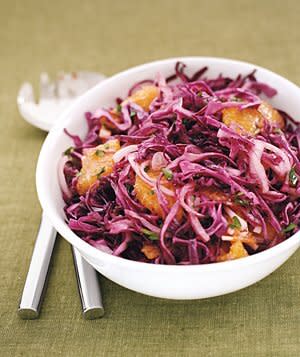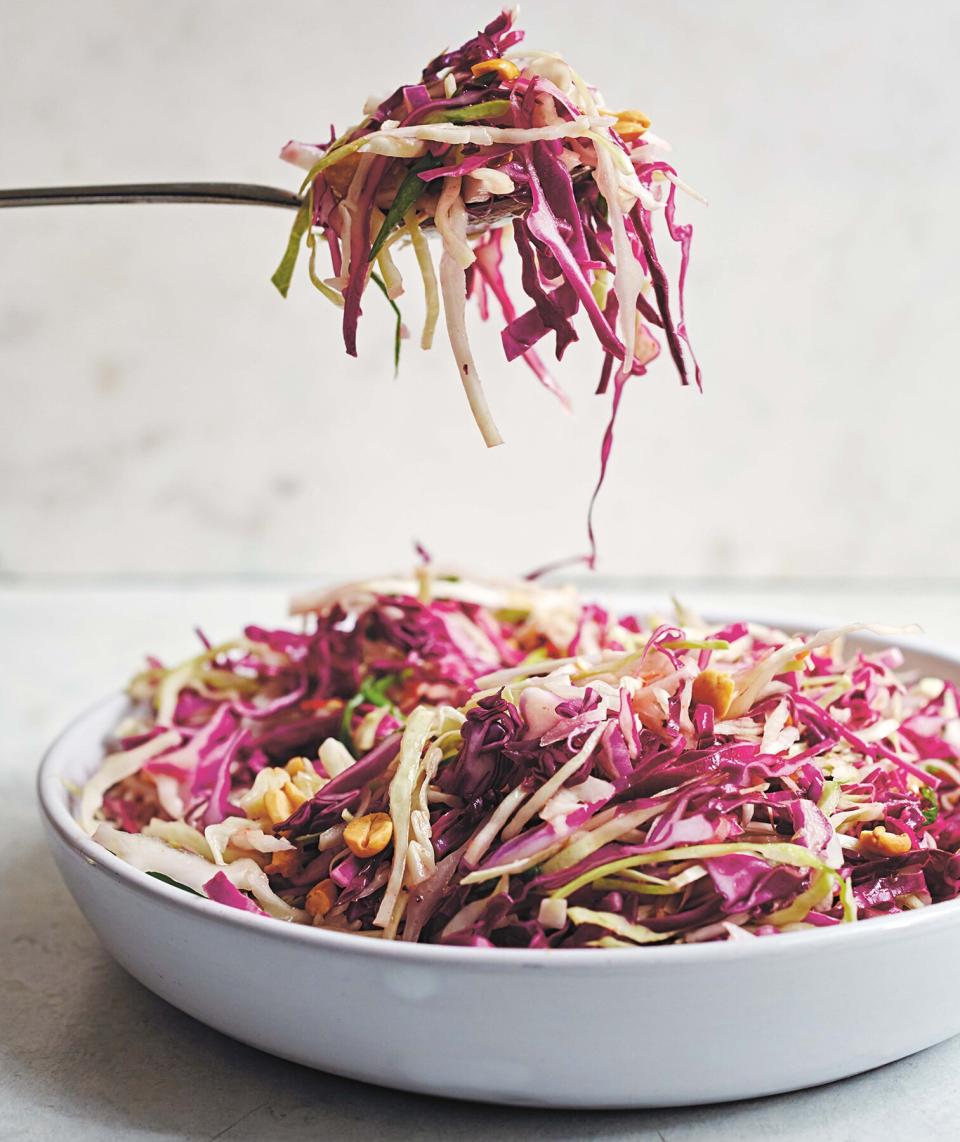Cabbage Is the Most Underrated Winter Vegetable: Learn How to Braise It, Roast It, and More

Can you think of a vegetable that offers more for the price than cabbage? Cabbage is affordable, substantial, abundant during lean winter produce months, and keeps for two weeks in the fridge. It is often colorful and always versatile.
For centuries, cabbage has been used around the world. Cabbage finds its way into savory pancakes and dumplings, sauerkraut and kimchi, as well as slaws and salads. It can also be rolled, stuffed, stir-fried, braised, roasted, grilled, and simmered in soup. Here's a primer on the types of cabbage and rewarding cooking methods.
What Are the Different Types of Cabbage?
Cabbage belongs to the same family as Brussels sprouts and kale. It evolved from a leafy mustard plant, and this is why it has a light natural pepperiness. Cabbage, though, also has hidden umami and sweetness that can come out with cooking.
RELATED: Everything You Need to Know About Umami
There are three main kinds of cabbage: red, green, and Savoy. Green is a mint-green that often shades to white in some parts. Red is a deep crimson or purple with white veins, and often packs a bit more bitterness. Savoy is green but, unlike the others, is deeply craggy (rather than smooth) and has leaves that almost look like kale. As you get closer to the core of any kind, inner leaves are usually lighter in color. This is because they get less sun.
Numerous heirloom varieties of cabbage exist, though these are generally difficult to find outside of specialized farms. And there are other cabbage families, like the one of Napa cabbage and bok choy—but those are for another time.
How to Braise Cabbage
When braising cabbage, start by coring it and slicing the leaves thin. Use a big pot for cooking. Cabbage is deceptively compact and always seems to produce a surprising amount of vegetable once chopped. You'll need a pot with plenty of surface area.
RELATED: How to Braise Anything Like a Chef in 9 Simple Steps
Start by cooking sliced cabbage in an oil like olive oil, giving it a hard sauté for about five minutes. From there, add a bit of vinegar, leftover wine, salt, and/or seasonings. Simmer the cabbage, covered, for approximately 20 minutes, stirring occasionally so it doesn't burn.
You won't need to add much liquid when braising cabbage. Like spinach and other leafy vegetables, cabbage's leaves contain a good amount of water that releases during cooking. Cabbage also braises well with meat.
How to Roast and Grill Cabbage
Cabbage is hearty enough to stand up to high heat, creating an opportunity for charring and caramelization. Translation: Cabbage is a prime candidate for roasting and grilling.
Set that oven to 450 degrees or more, or that grill to medium-high. Cut cabbage into wedges that are about an inch thick. If they're too thick, the inside will retain too much crunch. Flip the wedges halfway through their grilling or roasting. The cabbage will be done after about 10 to 15 minutes total, when char laces the exterior and a fork slides in with ease.
RELATED: How to Grill Anything to Perfection—Your Guide to Technique, Temperatures, and Seasoning
How to Stir-Fry Cabbage
This method works well with just cabbage, or cabbage plus other ingredients. To begin, peel off the cabbage leaves and cut them into a few large pieces. Make sure these leaves are dry. Towel them if needed. Any excess water will hamper the frying process.
Use an oil that can handle higher temperatures, like sunflower or grapeseed. When that oil is absolutely rippling with heat, add a clove or two of garlic for 30 seconds or so. Be sure to remove this garlic before it deeply browns and develops harsh bitterness.
Add the cut cabbage to the shimmering oil and cook for about 10 minutes, tossing and turning it frequently to avoid burning.
RELATED: Cooking Solutions: How to Cook Garlic Without Scorching
How to Make Cabbage Slaw
Cabbage can be a leading or supporting vegetable in a simple slaw. When making slaw, you don't need to cook cabbage, though some recipes may call for it. Especially when making a vinegar-based slaw, the cabbage will soften under the acidity's spell given time (hours or days). Indeed, slaw will usually be best after a few days in the fridge.
To prep cabbage for slaw, slice it into wedges and then into very thin strips. Each long strand of cabbage should be about as thick as a matchstick or blade of grass. You can even use the core in slaw if you slice it extra, extra thin. The best part about slaw? There are no limits, only those of your imagination.
RELATED: How to Cut an Avocado Like a Pro
Need inspiration? Check out some cabbage slaw recipes below.
Autumn Cabbage Slaw
This slaw, made with red cabbage, strikes a sweet and acidic balance thanks to the inclusion of brown sugar and cider vinegar. Navel oranges add a pop of freshness.

Thai Cabbage Slaw
For a Thai take on cabbage slaw, use your new cabbage grilling skills to prepare the veggie, and pair it with other ingredients such as fish sauce, cilantro, and roasted peanuts.

Carrot, Cabbage, and Apple Slaw With Cumin Lime Dressing
If you're craving a lighter slaw, give this recipe a try. It combines thinly sliced apples with shredded carrots and purple cabbage, and pairs the whole mixture with a bold, cumin-based dressing.


